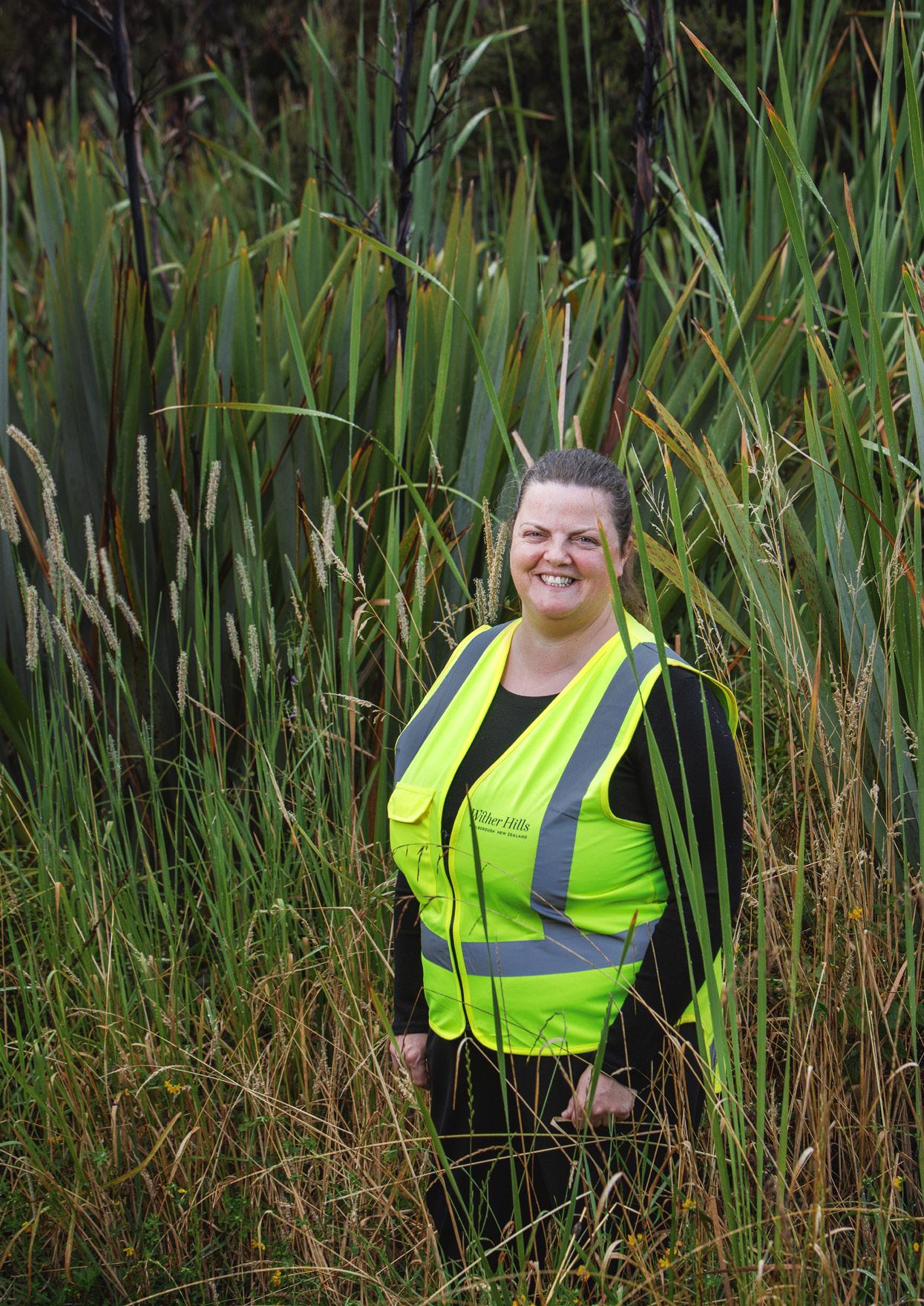
ISSUE NO. 338 / FEBRUARY 2023
MODEL VINEYARD
THE OFFICIAL MAGAZINE OF WINE MARLBOROUGH wine-marlborough.co.nz
THE PIPELINE SEASONAL UPDATE
Photo: Jim Tannock
Winepress
IN
RARANGI WETLAND
Large scale viticulture development opportunity
Located on the fertile plans South Martinborough township on Mahaki Road is this 152.3 hectare flat easily developed property offering 127 hectares more or less of excellent viticulture land with a sizeable water right. The area has produced award wining wines for many years giving wine industry investors confidence in the area. The property bounders the Ruamahunga River with deep fertile silt loam soils that have historically been used for cropping and grazing stock, producing solid income for the vendor. In preparation for viticulture development the vendor has had the property drained with viticulture in mind. The property is suitable for growing Sauvignon Blanc, Pinot Gris and Pinot Noir at solid cropping levels for commercial wine production. As we see the viticulture market tighten and a shortage of new bare viticulture land for development becoming available in Marlborough this is an excellent opportunity to secure a significant piece of tightly held land in this proven grape growing region. Contact the exclusive listing agents today!


bayleys.co.nz/4135419



Tender 2pm, Thurs 2nd March 2023 186 Chapel Street, Masterton
Smith I
a.smith@bayleys.co.nz EASTERN REALTY (WAIRARAPA) LIMTED, BAYLEYS, LICENECED UNDER THE REA ACT 2008
Poff I 027
BE MARLBOROUGH LTD, BAYLEYS, LICENECED UNDER THE REA ACT 2008
Andrew
027 7608 208
Mike
665 5477 mike.poff@bayleys.co.nz
South Wairarapa, 247 Mahaki Road
bayleys.co.nz
Boundary lines are indicative only
this issue...
12 Model Vineyard
High yields and increased grape prices in the 2022 harvest provided a “welcome improvement” for Marlborough grape growers, according to the latest Marlborough Vineyard Monitoring Report.
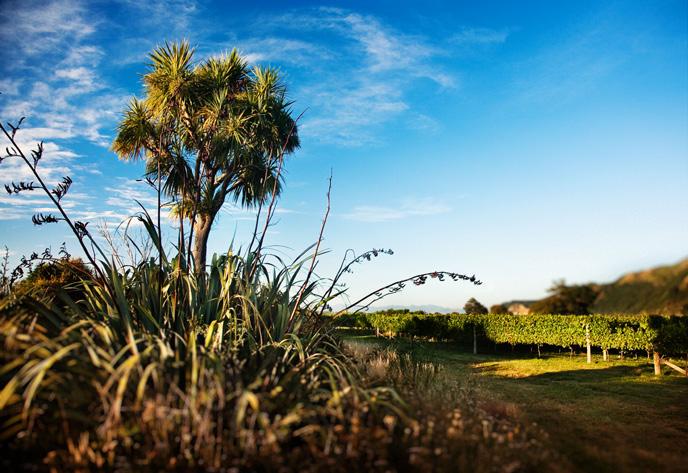
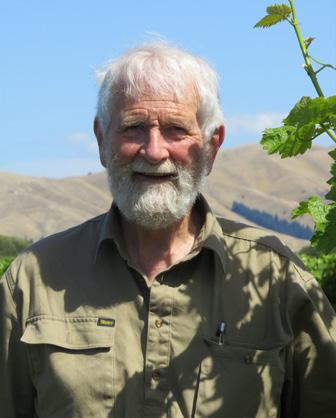
18
Cooperative Approach
Cloudy Bay founder David Hohnen is working with grape grower cooperatives around the world, including one in the ‘heartland’ of Marlborough Sauvignon Blanc.
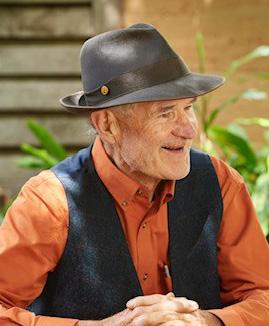
20
In the Pipeline
In the first of a series on water regulations, resource management expert Quentin Davies looks at what’s in store for the wine industry.

Winepress February 2023 / 1 14 22 16 REGULARS FEATURES 3 Editorial - Sophie Preece 4 From the BRI - Jeffrey Clarke 16 Pioneering SpiritMurray Paterson 20 Environment AwardsWither Hills' Rarangi Wetland 22 Generation Y-ineLewis Davidson 24 Biosecurity WatchKerrie Hopkins 26 Industry News 28 Wine Happenings Cover: Kathryn Kleboe at Wither Hills’ extraordinary Rarangi Wetland, Photo Jim Tannock. See page 18
12
SAFETY AROUND LIVE OVERHEAD LINES
Working on a vineyard can put you in all kinds of situationsbut close to electrical equipment and overhead conductors should never be one of them.
Prior to vintage 2018 Marlborough Lines (MLL) undertook a safety campaign to ensure that wine companies, harvest contractors, growers and vineyard owners were aware of the legal requirements for working around live overhead electric lines

Since then there has been a great response from a wide variety of wine industry participants, and incidents involving mobile plant and overhead lines have thankfully been few in number over that period.
As the network owner, MLL is very mindful of the need to keep "safe working distances" fresh in everybody's minds. While the focus since 2018 has been on the higher risk period over vintage, the requirement extends throughout the year where other vineyard operations are undertaken in the vicinity of overhead lines.
Based on the great response and increased awareness MLL intends to continue with a focus on education, and to encourage a risk-based approach with respect to the operation of mobile plant as a normal part of your hazard assessment for all of your operations.
THE REQUIREMENTS
When mobile plant will be operating (tipping, raising or lowering) 4 metres or less from overhead lines, under section 5 2 1 of NZECP 34 you must apply to MLL for written consent (Close Approach Authority) that allows the mobile plant to operate at a reduced distance.
In other circumstances, when mobile plant is not operating within 4 metres of a live overhead power line, you should identify the risks and apply appropriate controls to prevent harm and/or damage occurring
Get to know NZECP 34 It could save your life
What you need to know - tips to stay safe
Vineyards often have overhead power lines near or running through them, so there is significant risk - to you or your equipment - of accidentally touching the lines. You don't even need to touch the line to be in dangerelectricity can jump through the air to you and your equipment.
Obeying the rules can help ensure all workers' safety
Every line must be treated as live. Always.
Don't locate dump/load sites under or near overhead power lines.
When moving tall machinery, choose the route where power lines are high enough for adequate clearance. Always have any mobile plant device capable of being raised or lowered, in the lowered position prior to moving under lines.

Ensure operators are competent in the operation of their machines, thoroughly briefed and understand the dangers of working near overhead power lines. Ensure a competent safety observer is able to maintain effective communication with the operator and alert them to any perceived hazard.
Before you harvest, prune, load or move equipment, look up and familiarise yourself with the location of any overhead power lines.
Locate a warning notice as near as practicable to the operator/driver's position stating "WARNING KEEP CLEAR OF POWER LINES". These stickers are available from MLL.
Contact us
If you believe you may require a Close Approach Authority, need warning stickers, or have any questions, please phone Marlborough Lines on 03 577 7007 or email info@mll.co.nz to discuss.
We are happy to provide advice to help ensure everyone remains safe and well when working near overhead lines.
2 / Winepress February 2023
V I N E Y A R D S A F E T Y M A R L B O R O U G H L I N E S
General Manager:
Marcus Pickens 03 577 9299 or 021 831 820 marcus@winemarlborough.nz
Editor: Sophie Preece 027 308 4455 sophie@sophiepreece.co.nz
Marketing and Communications: Sarah Linklater 021 704 733 sarah@winemarlborough.nz
Events Manager: Loren Coffey loren@winemarlborough.nz
Advocacy Manager: Nicci Armour advocacy@winemarlborough.nz

Advertising: Joanna May advertising@winemarlborough.nz
Grape Grower Directors: Andrew Nation nationa@gmail.com
Anna Laugesen anna@craiglochart.co.nz
Michiel Eradus michiel@eraduswines.co.nz
Nigel Sowman nigel@dogpoint.co.nz
Tracy Johnston tracy@dayvinleigh.co.nz
Wine Company Directors: Beth Forrest beth@forrest.co.nz
Damien Yvon damien@closhenri.com
Gus Altschwager gus@akwines.net
James Macdonald james@hunters.co.nz
Jamie Marfell Jamie.Marfell@pernod-ricard.com
Designed by: Blenheim Print Ltd 03 578 1322
Disclaimer: The views and articles that are expressed and appear in Winepress are entirely those of contributors and in no way reflect the policy of the Marlborough Winegrowers. Any advice given, implied or suggested should be considered on its merits, and no responsibility can be taken for problems arising from the use of such information.
This document is printed on an environmentally responsible paper, produced using elemental chlorine free (EFC), third party pulp from responsible sources, manufactured under the strict ISO 14001 Environmental Management System and is 100% Recyclable.
From the Editor
IT’S A strangely normal feeling to have the Marlborough Wine & Food Festival back in gear this month, a vintage labour force largely accounted for, and the vagaries of nature the biggest drama of the impending harvest.
Wine Marlborough advocacy manager Nicci Armour says the latest vintage recruitment survey show industry is in a good position for vintage 2023, and “I’d go so far as to say that some companies, for the first time in the past few years, have recruited everyone they needed before Christmas, which is such a shift”, she says in our seasonal update on page 10. The mood in general is a lot more positive, relaxed and optimistic, says Nicci, using three words seldom heard over the past three years.
I don’t want to downplay the continued risks of Covid-19 in our community, but this month the Wine Happenings page has lost its warning that every physical event listed could be cancelled at any time. There are several items on that list that did not exist before the pandemic, with wine companies digging deep to offer doable events to locals - I’m writing this on the cusp of the Sounds of Summer event at Catalina Sounds, and a Frank’s pop up at Spy Valley’s cellar door, while the likes of Rock Ferry, Forrest Estate, and Tūpari have kept up a steady stream of gigs, markets and tastings.
That’s just one of the paradoxically positive outcomes of the pandemic –which has inspired what one viticulturist I spoke to calls “forced innovations”. Among them is the increased currency of good relationships in our wine industry, with integrity and personal connection paying dividends. The Vineyard Monitoring Report for Marlborough 2022 (see page 12) reveals that two thirds of the growers surveyed in the programme have struggled with labour issues over the past two seasons, including contract labour providers having inadequate staff numbers. But the remaining third reported no significant labour supply issues, thanks to fostering good long-term relationships with contractors, and proactively creating attractive employment conditions for permanent staff. Relationships are at the heart of the iconic Marlborough Wine & Food Festival, where our wine industry gathers to showcase the people, places and wines that make our region famous. I love the new location at Renwick Domain, with this heritage event held in a village so closely wed to our industry. It’s been a long three years since the last festival in 2020, when we were blissfully unaffected by the virus spreading in other countries. We’ll never get back to that ‘normal’, but this new one, with all its forced innovations, is looking pretty good.
SOPHIE PREECE
Winepress February 2023 / 3
From BRI Research project update
 JEFFREY CLARKE
JEFFREY CLARKE
RELAXING ON the beautiful Queen Charlotte Track at the start of this new year, I found myself thinking about changes that lie ahead – the ones we know are coming, and the inevitable “unknowns”. As the industry’s grape and wine research body, change is central to the Bragato Research Institute (BRI) role: well-designed research can help the industry anticipate, initiate, and exploit change – particularly by providing information, options and tools to empower winegrowers to make better, more focused business decisions. I’d like to highlight a few exciting research initiatives that hold promise of positive change for winegrowers.
Next Generation Viticulture: One key challenge ripe for systematic industry research is how to improve winegrowers’ financial sustainability in the face of relentless increases in production costs. In September, BRI announced it is developing a transformative project to “re-think” vineyard canopy design and management; to understand whether, and how, we can economically convert more of our unblemished Kiwi sunshine into quality fruit. The ‘Next Generation Viticulture Programme’ would build on established New Zealand canopy research. It would also leverage and extend findings from Plant & Food Research’s ‘Future Orchard Planting Systems’ research. This more recent work has transformed production in other New Zealand crops to deliver consistent increases in quality and quantity, and decreases in variability, without significant changes in inputs.
Whether the underlying principles would apply as well in grapes, or have the same outcomes, is unknown – but that’s precisely why BRI wants to do the research.
Members have expressed strong support for the project so far and are keen to shape and invest in the programme; we are keen to talk with other winegrowers interested in participating. Working with industry, we are developing several guiding principles for the programme, including:
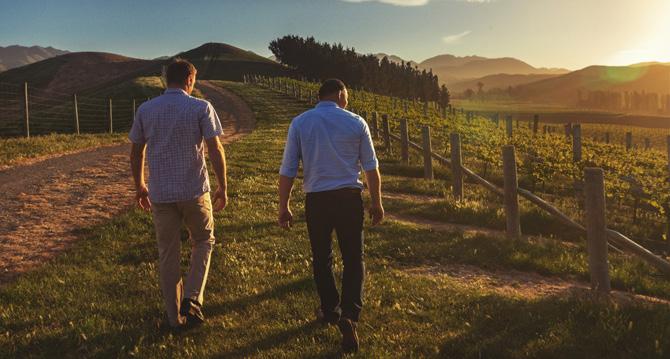
• Quality is key: productivity gains should come with improvement in quality, or at the very least not compromise quality
• Improvements should not require increased inputs per tonne (especially labour or water)
• Working with new technology and mechanisation options as they are developed for winegrowing

• The new designs should work equally well for both small and large producers
• The new knowledge should also benefit winegrowers who do not want to replant (such as those with healthy old vines)
We hope to secure funding and approvals shortly, and begin work over winter. Once underway, we will provide opportunities for members to learn about, and share in the programme journey. You can read more about this
4 / Winepress February 2023 PROTECT Join Marlborough’s grower-owned wine company and access better returns for your vineyard. Contact Craig on 021 911 212
“Well-designed research can help the industry anticipate, initiate, and exploit change.”
Jeffrey Clarke
programme on page 18 of the January 2023 Winepress. Sauvignon Blanc Grapevine Improvement Programme: Another key industry challenge is increasing the diversity and resilience of our vines. Our Sauvignon Blanc Grapevine Improvement Programme, now in its second year, has already produced 5,000 unique new plantlets (out of an anticipated 11,000). The programme’s approach is to grow plants with a high rate of natural variations – which we will study, identify and catalogue – providing us a “vineyard of diversity” for selecting improved clones. It will act as a reservoir of variation to draw on to combat future pests, diseases, or environmental conditions. The techniques and knowledge we develop can then be applied to other varieties. You can directly help this programme by keeping an eye out for any unusual vines (of any variety), and capturing their diversity at oddvine.co.nz.
Can we get along with wētā?: In 2021, BRI held its first open call for ideas new and novel to the wine industry. This resulted in two levy-funded projects that are both well underway. In the first project, Plant & Food Research, alongside Massey University, are researching ecological alternatives to plastic wētā guards in the Awatere, as well as identifying other insects potentially causing damage to the vines. Thank you to Yealands, Indevin, Pernod Ricard and Hortus for funding the Massey PhD student for this project, and to the Awatere growers participating in the project.
Managing waste: The second project is taking place in the North Island, where University of Auckland researchers known for their work in PFAS cleanup are using this knowledge to investigate a new way to break down grape marc for repurposing in secondary markets. Previous research and industry experience has shown us that the grape seeds are the hardest to break down for any secondary uses of marc, so the researchers have secured additional Marsden funding from the government specifically to tackle the seeds. This could be a gamechanger for marc repurposing and for those looking to our waste streams as revenue streams. The first annual reports from both of these projects will be available to members in March in our research library at nzwine.com.
Research winemaking: Many winegrowers have discovered the advantages of using our BRI research winery to conduct their winemaking trials – whether a single ferment, or a whole series. It’s not too late to book a trial for V23, and the process couldn’t be easier: bri.co.nz/winery-trials.


Change is a constant, and none of us can know what is around the corner for 2023. BRI is here to help the industry shape and manage those changes for a profitable and sustainable future. If you want to know more about any of our work, please get in touch. Wishing you a happy, productive and prosperous 2023!
Jeffrey Clarke is chief executive of BRI
Let
◆
◆
◆ Over 60,000 cubic metres of storage spread over two sites.
◆ Chilled storage available during vintage for handpicked grapes.
◆ Sophisticated monitoring equipment ensures your product is kept at the optimum temperature.
◆ We could lease you a small room for your exclusive use to suit your particular temperature requirements (0 o C to + 30 o C).
◆ We store bottled wine, barrels of wine and new plants awaiting the opportune time to plant.
◆ Individual rooms available to grow new budwood.

PROTECT
PROVINCIAL COLDSTORES LIMITED
us take care of all your controlled Temperature storage requirements:
Custom controlled area
Approved Transitional Facility for unloading of Imported Containers
Old Renwick Road, Blenheim Tel: 03 578 2648 Fax: 03 578 2546 www.provincialcoldstores.co.nz Gouland Road, Spring Creek. Tel: 03 570 5944 Fax: 03 570 5955
coolest place
C M Y CM MY CY CMY K PCL AD Winepress 2016.pdf 1 15/07/16 3:21 PM
“the
in Marlborough”
Table 1: Blenheim Weather Data – December 2022
Table 2: Sunniest towns in New Zealand for 2022
¹GDD’s Max/Min are calculated from absolute daily maximum and minimum temperatures
²GDD’s Mean are calculated from average hourly temperatures
Temperature
Rainfall
Total rainfall for 2022 was 830.6 mm, 130% of the LTA (1986-2021) of 639.0 mm (Table 3). It is remarkable that in a year that recorded well above average rainfall, that 6-months recorded below average rainfall (January, March, April, May, September and October). We would normally expect that in a year with high rainfall that a high proportion of the months would record above average rainfall. This was not the case in 2022. One month recorded average rainfall (December). Five months recorded above average rainfall (February, June, July, August and November). As previously reported, July’s rainfall of 220.6 mm was the first time that Blenheim had ever exceeded 200 mm rainfall in a single month.
The mean temperature for December 2022 of 16.8°C was 0.1°C below the long-term average (LTA). The first week of December was by far the coolest week of the month with the mean temperature 2.8°C below the LTA. The maximum temperature during December 2022 was 30.7°C, recorded on 29 December. The minimum temperature during December 2022 was 7.5°C, recorded on 2 December.
Sunshine
December 2022 recorded 234.2 hours sunshine, 94% of the LTA.

Rainfall
December 2022 recorded 48.8 mm rain, 101% of the LTA.
Annual weather statistics for Blenheim for 2022, compared to the long-term average Sunshine
Total sunshine for Blenheim in 2022 was 2479.3 hours. This was 99% of the LTA of 2508 hours (1986-2021). 2022 was the 44th sunniest year on record for Blenheim for the 93 years 1930 to 2022. The sunniest year on record is 2015 with 2813.8 hours. New Plymouth took out the title as sunniest town in New Zealand in 2022 (Table 2). This is the second year in a row that New Plymouth has come out on top. Blenheim was 180 hours behind New Plymouth in 4th place.
6 / Winepress February 2023
December December 2022 Dec Period Dec 2022 compared to LTA LTA of LTA 2021 GDD’s for: Month - Max/Min¹ 211.5 97% 217.9 (1996-2021) 265.5 Month – Mean² 205.9 96% 213.4 (1996-2021) 252.6 Growing Degree Days Total Jul – Dec 22 – Max/Min 631.3 113% 559.6 (1996-2021) 672.9 Jul - Dec 22 – Mean 656.2 108% 606.8 (1996-2021) 697.9 Mean Maximum (°C) 21.4 -0.5°C 21.9 (1986-2021) 22.9 Mean Minimum (°C) 12.2 +0.4°C 11.8 (1986-2021) 14.3 Mean Temp (°C) 16.8 -0.1°C 16.9 (1986-2021) 18.6 Ground Frosts (<= -1.0°C) 0 Equal 0.09 (1986-2021) 0 Air Frosts (0.0°C) 0 Equal 0 (1986-2021) 0 Sunshine hours 234.2 94% 249.3 (1986-2021) 201.5 Sunshine hours – lowest 167.4 2011 Sunshine hours – highest 321.2 1974 Sunshine hours total – 2022 2479.3 99% 2508.0 (1986-2021) 2522.7 Rainfall (mm) 48.8 101% 48.4 (1986-2021) 85.8 Rainfall (mm) – lowest 0.8 1934 Rainfall (mm) – highest 124.0 1984 Rainfall total (mm) – 2022 830.6 130% 639.0 (1986-2021) 719.0 Evapotranspiration – mm 118.2 84% 140.2 (1996-2021) 135.1 Avg. Daily Windrun (km) 186.1 66% 280.6 (1996-2021) 228.6 Mean soil temp – 10cm 18.1 +0.3°C 17.8 (1986-2021) 18.8 Mean soil temp – 30cm 19.2 = 19.2 (1986-2021) 19.6
Town Sunshine
1st New Plymouth 2659.3 2nd Richmond 2581.0 3rd Whakatane 2525.9 4th Blenheim 2479.3 5th Tekapo 2463.7
Placing
Hours
Table 3: Monthly rainfall recorded in Blenheim for 2022
Table 4: Mean monthly temperatures recorded in Blenheim for 2022
Temperature
The mean temperature for 2022 was 13.81°C; 0.57°C above the LTA for the 36 years 1986-2021. 2022 is Blenheim’s seventh hottest year on record (1933 to 2022). Nine months in 2022 recorded above average mean temperatures. Three months in 2022 recorded below average mean temperatures (Table 4.)
The data in table 4 indicate that the autumn and winter months (March to August 2022) were in general further above their respective LTAs than during the spring and summer months, with the exception of November. Figure 1 displays the long-term trend in mean summer and winter temperatures for Blenheim for the 90 years 1933 to 2022. The trend lines indicate that the summer mean has increased by 0.50°C over the 90 years, whereas the winter mean has increased by 2.15°C. As I have highlighted on previous occasions, Blenheim’s winter temperatures are now far warmer than they were in the mid -20th century.
The hottest day of 2022 was 19 January with a maximum temperature of 31.0°C. The second hottest day was 29 December with 30.7°C. These were the only two days during 2022 when the temperature exceeded 30.0°C. The coldest day of 2022 was 11 August with an air frost of -1.9°C and a ground frost of -5.1°C.
Figure 1: Trend in summer and winter mean temperatures for Blenheim (1933 to 2022)
The data in table 4 indicate that the autumn and winter months (March to August 2022) were in general further above their respective LTAs than during the spring and summer months, with the exception of November. Figure 1 displays the longterm trend in mean summer and winter temperatures for Blenheim for the 90 years 1933 to 2022. The trend lines indicate that the summer mean has increased by 0.50°C over the 90 years, whereas the winter mean has increased by 2.15°C. As I have highlighted on previous occasions, Blenheim’s winter temperatures are now far warmer than they were in the mid-20th century.
Frosts
Frosts
There were 39 ground frosts in 2022, 12 less than the LTA of 51. There were 8 air frosts in 2022, 10 less than the LTA of 18 (1986-2021).
There were 39 ground frosts in 2022, 12 less than the LTA of 51. There were 8 air frosts in 2022, 10 less than the LTA of 18 (1986-2021).
Wind-run
Wind-run
Average daily wind-run for 2022 was 203.7 km, 81% of the LTA of 250.9 km (1996-2021). This is the lowest annual average daily wind-run over the 27 years 1996 to 2022. For 15-years in a row (2008-2022) Blenheim has recorded lower than average daily wind-run and wind speed. This is quite remarkable given the fact that the LTA period is only for the 26 years 1996 to 2021. All 12-months in 2022 recorded below average windrun.
Average daily wind-run for 2022 was 203.7 km, 81% of the LTA of 250.9 km (1996-2021). This is the lowest annual average daily wind-run over the 27 years 1996 to 2022. For 15-years in a row (2008-2022) Blenheim has recorded lower than average daily wind-run and wind speed. This is quite remarkable given the fact that the LTA period is only for the 26 years 1996 to 2021. All 12-months in 2022 recorded below average wind-run.
Winepress February 2023 / 7
Month Rainfall % of LTA (mm) (mm) LTA 1986-2021 January 12.6 30% 42.2 February 153.4 334% 45.9 March 17.0 41% 41.7 April 9.6 19% 49.7 May 47.8 80% 59.4 June 80.4 123% 65.6 July 220.6 342% 64.5 August 112.4 182% 61.8 September 38.6 73% 52.8 October 16.8 29% 57.2 November 72.6 147% 49.6 December 48.8 101% 48.4 Total 830.6 130% 639.0
Month Mean (°C) Deviation LTA (°C) from LTA 1986-2021 January 18.3 +0.1 18.2 February 17.3 -0.6 17.9 March 16.3 +0.2 16.1 April 14.7 +1.2 13.5 May 12.5 +1.3 11.2 June 9.5 +0.7 8.8 July 8.9 +0.9 8.0 August 10.4 +1.2 9.2 September 11.6 +0.4 11.2 October 12.9 -0.3 13.2 November 16.5 +1.6 14.9 December 16.8 -0.1 16.9 Mean 13.81 +0.57 13.24
Figure 1: Trend in summer and winter mean temperatures for Blenheim (1933 to 2022)
January 2023 Weather Table
Weather Data – January 2023 January January 2023 January Period January 5 7 9 11 13 15 17 19 21 Temperature ( ° C) Summer mean 10 year moving mean Summer trend Winter mean 10 year moving mean Winter trend Summer trend line increase 1933 - 2022 = 0.50 C Winter trend line increase 1933 - 2022 = 2.15 C
5: Blenheim
Table 5: Blenheim Weather Data – January 2023
being close to average in both December 2022 and January 2023, whereas temperatures from December 2021 through to mid-January 2022 were well above average. NIWA was predicting a very high chance of above average temperatures from December 2022 to February 2023. So far, that prediction is somewhat wide of the target.
Sunshine
¹GDD’s Max/Min are calculated from absolute daily maximum and minimum temperatures
²GDD’s Mean are calculated from average hourly temperatures
The mean temperature of 18.0°C was 0.2°C below the LTA. There were no days during January 2023 when the daily maximum reached 30.0°C in Blenheim. The highest maximum air temperature of 29.7°C was recorded on 20 January 2023. There were only 5-days when the temperature was between 25.0°C and 30°C. This low number of hot days stands in marked contrast to the previous 4-years, which had between 10 and 20 days above 25.0°C.
January 2022. 1 day above 30.0°C. 10 days above 25.0°C
January 2021. 2 days above 30.0°C. 13 days above 25.0°C
January 2020. 2 days above 30.0°C. 10 days above 25.0°C
January 2019. 10 days above 30.0°C. 20 days above 25.0°C
Although January 2023 was only slightly cooler than January 2022, the two months were markedly different as far as summer goes. The lack of warm days combined with the overcast weather associated with above average rainfall in January 2023 made for a very lacklustre summer month. Whereas January 2022 felt like a great summer month due to high sunshine hours and low rainfall.
Growing Degree Days
The black growing degree day line from September to November 2022 (Figure 2) followed a very similar path to the yellow line in 2021. However, from December onwards the 2022-23 line has followed a fairly horizontal path with temperatures
211.7 hours sunshine for January was 80% of the LTA of 265.6 hours. This is the fifth lowest January sunshine total on record for Blenheim for the 94 years 1930 to 2023. The first 2-weeks of January were very overcast, with average daily sunshine of only 5.19 hours compared to the LTA January daily sunshine of 8.57 hours. Ten of the 12-days from 15 to 26 January recorded above average sunshine as these 12-days recorded no rain. These 12-days also prevented January 2023 becoming the least sunny January on record. However, the final 5-days of the month saw a return of the overcast weather. The January 2023 sunshine total was in marked contrast to January 2022, which recorded the fifth highest total on record with 313.8 hours; i.e. January 2023 recorded 102.1 hours less sunshine than January 2022, or 3.3 hours less per day
Blenheim has not made a good start to the sunniest town race for 2023, languishing in 8th place for January. Central Otago was the sunniest region in January, with Cromwell taking the top spot. That was not surprising, given that this region has been enjoying a good summer so far.
Rainfall
Blenheim recorded 60.4 mm rain during January, 146% of the LTA. The above average rainfall in January 2023 follows 4-years (2019 to 2022) when January recorded very low rainfall. The most recent previous year with higher January rainfall was 2018, with 80.4 mm. However, February 2018 also recorded 181.4 mm rain, the highest February total on record. March and
8 / Winepress February 2023
January Jan 2023 Jan Period January 2023 compared to LTA LTA of LTA 2022 GDD’s for: Month - Max/Min¹ 247.4 97% 255.4 (1996-2022) 258.4 Month – Mean² 247.5 100% 247.6 (1996-2022) 255.3 Growing Degree Days Total Jul 22 – Jan 23 – Max/Min¹ 878.7 108% 815.0 (1996-2022) 931.3 Jul 22 - Jan 23 – Mean² 903.7 106% 854.4 (1996-2022) 953.5 Mean Maximum (°C) 22.6 -1.0°C 23.6 (1986-2022) 23.8 Mean Minimum (°C) 13.3 +0.5°C 12.8 (1986-2022) 12.9 Mean Temp (°C) 18.0 -0.2°C 18.2 (1986-2022) 18.3 Ground Frosts (<= -1.0°C) 0 Equal 0 (1986-2022) 0 Air Frosts (0.0°C) 0 Equal 0 (1986-2022) 0 Sunshine hours 211.7 80% 265.6 (1986-2022) 313.8 Sunshine hours – lowest 165.2 1971 Sunshine hours – highest 335.3 1957 Sunshine hours total – 2023 211.7 80% 265.6 (1986-2022) 313.8 Rainfall (mm) 60.4 146% 41.4 (1986-2022) 12.6 Rainfall (mm) – lowest 0 1978 Rainfall (mm) – highest 167.0 1985 Rainfall total (mm) – 2023 60.4 146% 41.4 (1986-2022) 12.6 Evapotranspiration – mm 121.3 84% 144.9 (1997-2022) 152.5 Avg. Daily Windrun (km) 177.8 66% 268.0 (1996-2022) 205.5 Mean soil temp – 10cm 19.4 +0.3°C 19.1 (1986-2022) 19.9 Mean soil temp – 30cm 20.8 = 20.8 (1986-2022) 21.4 1
Temperature
from December 2021 through to mid-January 2022 were well above average. NIWA was predicting a very high chance of above average temperatures from December 2022 to February 2023. So far, that prediction somewhat wide of the target.
April 2018 also recorded above average rainfall. Last year, February 2022 recorded 153.4 mm, the second highest February total on record. Hopefully February 2023 will not bring high rainfall.
Wind-run
Average daily wind-run in January 2023 was 177.8 km, 66% of the LTA of 268 km. This is the lowest January wind-run total on record for the 28 years 1996 to 2023; i.e. it was a very calm month. 20 January was the windiest day of the month with 281 km wind-run. This was the only day in January when the daily wind-run exceeded the LTA of 268 km.
Shallow soil moisture (topsoil)

Average shallow soil moisture (0 to 35 cm) at the Grovetown Park weather station for January 2023 was 25.3%. This was well above the LTA of 20.6%. The shallow soil moisture oscillated up and down during the month. On 1 January it was 22.8%. However, following 37.8 mm rain from 4 to 6 January soil moisture rose to 30.6% on 7 January. With no rain recorded from 12 to 27 January the soil moisture dropped back down to 20.7%. Further rain on the 28th and 29th pushed the soil moisture back up slightly to 22.3%.

Winepress February 2023 / 9
Figure 2: Normalized growing degree-days for Blenheim: days above (+) or below (-) the long-term average (1990-2021) for the period 1 September to 30 April
Rob Agnew - Plant & Food Research / Marlborough Research Centre
-150 -100 -50 0 50 100 150 200 250 300 1 Sep 1 Oct 1 Nov 1 Dec 1 Jan 1 Feb 1 Mar 1 Apr Growing Degree Day deviation from avergae 2011/12 2017/18 2019/20 2020/21 2021/22 2022/23
Figure 2: Normalized growing degree-days for Blenheim: days above (+) or below (-) the long-term average (1990-2021) for the period 1 September to 30 April
MARLBOROUGH GRAPEGROWERS had a gloomy early summer season, with cloudy, damp days spurring 12 botrytis infection periods. But Plant & Food Research weather expert Rob Agnew says that pre-veraison weather is not the region’s real risk period. “Marlborough can have a wet early season, but it seems to be that botrytis expression really hinges around wetness from February onwards,” he says on a bright blue day in late January, on the cusp of veraison for early season varieties. Botrytis is certainly present in vineyards, “but if it’s dry from here on, we’ll be fine”, says Rob.
The first two weeks of January were wet and overcast, with 61% of typical sunshine. However, the 10 days after that were well above average sunshine hours, and the month’s total is “clawing its way back” towards average, he says. And while there were quite a large number of infection periods, there were not high amounts of rain, he adds, comparing the 235mm recorded between Sept 2021 and the end of January 2022 to the 220mm recorded between September 2022 and January 26, 2023.
Blair McLean, horticultural sales representative at Fruitfed Supplies in Blenheim, has seen downy mildew
Seasonal Update
Damp start to summer season
in Marlborough for the first time this season, and while it’s “nothing major” and controllable with the right spray programme, the infection reflects the humid and damp start to 2023, as well as the shortage of labour for wire lifting and canopy management. “We are seeing a wee bit of a result from that – from not getting there on time,” he says.
Overall, crop loads are looking average or just above in the Marlborough vineyards he works with, “with lots of 17 tonne per hectare crops out there; some bigger, some smaller”. Inclement weather over flowering has affected yield potential in some blocks, and there’s some hen and chicken across the region, “but most are starting to fill out”, he says on January 26.
Blair says the conditions are similar to the same time last year, before 200mm of rain fell in February, when big yields and disease pressure coincided. Given shipping constraints slowing the movement of wine, he says the industry should feel some relief at crop loads being lighter this year. “That’s been the fear – that we have a back-toback big harvest.” The 2023 season is likely running later than last year, because of the weather in first few weeks of January, Blair adds.
Agriculture and Viticulture Machinery Sales & Service Specialists




New Zealand agent for Netwizz and Olinet netting applicators. Slim, standard and hydraulic mast models available.

10 / Winepress February 2023 GROW
| www.agrivit.co.nz
Sales & Service: Jeremy Watts 021 446 225 | jeremy@agrivit.co.nz Parts: Warrick Meiklejohn 03 572 8787 |warrick@agrivit.co.nz 29 High Street, Renwick 7204, Marlborough | 03 572 8787 | info@agrivit.co.nz
SOPHIE PREECE
Whitehaven Wines
Tahryn Mason, Indevin Group grower relations partner and 2022 Corteva Young Viticulturist of the Year, says that although fruit set is variable in places, yields appear to be above the long-term average. While not as abundant as 2022, they’re heavy enough that the region will need good temperatures and diurnal range to get fruit ripe for harvest 2023 while maintaining freshness and acidity, says Tahyrn Speaking on January 26, he notes bunches have not closed as much as a typical year, with quite a lot of movement remaining through the rachis. “Things are starting to squeeze, but not extra tight.” This enables more efficacious spraying, “so it’s not necessarily a bad thing”, he adds.
When it comes to disease pressure, growers and wine


Winery workforce

The industry is in a good position for vintage 2023 when it comes to winery workers, says Wine Marlborough advocacy manager Nicci Armour. “I’d go so far as to say that some companies, for the first time in the past few years, have recruited everyone they needed before Christmas, which is such a shift.” There are still more inexperienced winery workers than there would have been before Covid-19, but the mood in general is a lot more positive, relaxed, and optimistic she says. “There’s a much different feeling across the industry about this vintage.”
companies worked hard to mitigate the early season botrytis risk, with timely trimming to keep canopies open. There has also been an elevated powdery mildew risk, and some downy mildew in the region from mid-January, although the incidence is “sporadic” so “it’s not panic stations”, Tahryn says.
The botrytis risk will remain throughout the season, “But it’s not as intense as it could be considering the start we have had,” he adds. “I would preface all this all by saying the decider is going to be the rain from veraison to harvest. That’s going to be the real decision maker I believe.’
Winepress February 2023 / 11 GROW Stop Botrytis in its tracks 0800 116 229 biostart.co.nz BIOS 096 BioStart TripleX biofungicide » Prevents and controls botrytis by using a naturally occurring opponent to these fungi » TripleX is compatible with a range of other sprays » Available from leading Horticultural Suppliers. BIOS 096 TripleX Half Page Advert Update.indd 2 14/1/21 4:01 pm
Opportunity Grows Here. Photo Richard Briggs
Marlborough Vineyard Model
Bumper vintage boosts the books
HIGH YIELDS and increased grape prices in the 2022 harvest have provided a “welcome improvement” for Marlborough grape growers, according to the latest Marlborough Vineyard Monitoring Report.
The Marlborough vineyard model reported a record financial outcome in 2021/2022, with an operating profit of $19,425 per producing hectare, well up on the $4,535 per producing hectare in 2020/2021, which was 66% down on the previous year and the lowest outcome since 2011/2012. The boost is thanks to average yields of 15.1 tonnes per hectare in the latest harvest, compared to the 9.4 tonnes achieved in 2020/2021, along with an increase in grape prices.

The 2022 result is something of a “balancing out” after the previous year, says Fruition Horticulture’s Greg Dryden, who drafts the annual report for New Zealand Winegrowers and the Ministry for Primary Industries. “These two years results reflect the ongoing volatility grape growers face and
positivity of 2022”, as have land prices, with a 20% to 25% increase in values over the past year.
The high yields of last season were the result of warm weather during flowering and high rainfall in December 2021, followed by a large rain event in February 2022. “These conditions led to high berry numbers and good berry weights,” says the report. That’s in contrast to the 2020/21 grape growing season, beset by early spring frost events, cooler periods over flowering and pollination, and a dry summer, which all impacted on berry numbers and weights. But 2022 was not without major challenges, with community spread of the Covid-19 Omicron variant as vintage kicked off, exacerbating existing labour shortages. The region’s harvest kicked off early, and at lower brix levels than usual, to ensure it could all be picked on time.
The good year offset a 9% jump in vineyard working expenses in 2021/22, following a 6% rise the year before, with increasing wage rates a “significant driver”, and labour
reinforce the importance of maintaining good yields while working closely with their wineries in an environment of rapidly increasing costs.”
Grape prices increased for all varieties in 2020/21, and again in 2021/22, “driven by strong demand from wineries seeking to secure grape supply to replace depleted wine stocks”, says the report. When it comes to Marlborough Sauvignon Blanc, that increase is a trend in play since 2017. Greg says demand for grapes has reflected the “real
Vineyard prices reflect demand
expenses accounting for more than 55% of total vineyard working expenses, says the report.
Greg says morale amongst the surveyed growers was generally good, although some were cautious, and concerned about the rising costs of production and increasing reliance on good yields, which are weather dependent. “The numbers are the numbers but sometimes you get very differing opinions,” he says, noting the value of “face to face” conversations with those surveyed. “You
An average increase of 20% to 25% in the value of Marlborough vineyards sold over the past year is reflected in the value of the Marlborough model vineyard. Colliers Rural Valuation Adviser Tim Gifford valued the 30-hectare vineyard located on the central Wairau Plains, and based on the variety mix and productive performance of the model, at $293,000 per planted hectare as of June 30, 2022. The Vineyard Monitoring Report 2022 notes that demand for vineyards is being driven by wine companies keen to increase grape supply quickly, “and hence choosing to expand supply by purchasing existing vineyards rather than developing green field sites”.
12 / Winepress February 2023 GROW
“These two years results reflect the ongoing volatility grape growers face.”
Greg Dryden
SOPHIE PREECE
Relationships protect labour force
Good relationships with labour contractors have paid dividends for some Marlborough grapegrowers in recent seasons. The Vineyard Monitoring Report for Marlborough 2022 reveals that two thirds of the growers surveyed have struggled with labour issues over the past two seasons, including contract labour providers having inadequate staff numbers, resulting in delays and reports of poor results from inexperienced workers. But the remaining third of the survey group reported no significant labour supply issues, thanks to fostering good long-term relationships with contractors, and proactively creating attractive employment conditions for permanent staff, says the report. “Several of this group had signed three-year contracts with their contractors (labour and machinery) to ensure service and supply.” Some growers provide transport allowances, and provide gifts such as food, wine or vouchers to enhance the employment package available to staff.
get some that look at the numbers and go, ‘that’s fantastic; I might buy the neighbour’s now. Things look good’. Then you get the others that say, ‘that’s as good as it’s ever going to get. It’s only downhill from here’.”
While some surveyed noted that the uplift in grape prices was “very positive” to their financial result, others believe prices need to keep up with increasing expenses. Some growers are planning on increased mechanisation and lifting resource use efficiency to reduce costs, along with vineyard re-development to boost production. “Many vineyards in Marlborough are becoming less viable and require re-development due to their age, and the prevalence of trunk disease causing yields to decline,” notes the report. “There is a trend amongst contract grape growers to remove less profitable varieties such as Pinot Noir and replace with Sauvignon Blanc. Wineries are more likely to preserve Pinot
Noir plantings to meet the requirements of their portfolio.”
The Vineyard Monitoring Report assesses production and financial performance based on a vineyard model of 30 producing hectares, using data from 10 vineyards in the Awatere Valley and 35 in the Wairau Valley.


Participants required.
The team behind the Marlborough Vineyard Monitoring Programme is seeking a small number of new growers into the survey group for 2023. While all vineyards would be considered, there is a preference for medium-sized vineyards, and vineyards located in the upper Wairau, including contract growers and those with their own winery. For more information contact Greg Dryden: gregdryden@fruition.net.nz
“Over 15 years experience serving the Marlborough wine industry ”

Winepress February 2023 / 13 PROTECT MARLBOROUGH NO TILLAGE FOR ALL YOUR REGEN VINEYARD SERVICES GROUND AERATION SPECIALISED DIRECT DRILLING CRIMP ROLLING MATT RYAN 021 865 232 PIP RYAN 0274 865 232 CALL TODAY TO DISCUSS YOUR OPTIONS MECHANICAL ENGINEERING WWW.PHOENIXMECHANICAL.CO.NZ
Warm and Chilled Glycol Systems Design & Build Mechanical Services Heat Recovery Systems
Wine and Juice Lines Water Treatment and Filtration
021 177 2669
S/S
PHOENIX
David Hohnen
Pioneer back in the heartland
FROM STARTING Cloudy Bay to growing wine cooperatives around the world, David Hohnen has a talent for bringing people together. With current wine projects in Bordeaux, Rioja, Marlborough and Australia, he hasn’t taken his foot off the gas since establishing Cape Mentelle vineyards in Margaret River with his brothers Mark and Giles in 1970, and launching Cloudy Bay with winemaker Kevin Judd in 1985, with backing from Mark. “Cloudy Bay was a once-in-a-generation thing,” says David, nearly 40 years on. “It was a horse that nearly got away. And it’s still bolting, and it’s under good management. And supposedly anecdotal, but I believe it’s the best recognised white wine in the world.”
These days he takes a more ‘hands off’ approach, working as a wine broker and consultant with his daughter Freya for their company Crackerjack Wine. One of their projects has been working with the Marlborough Grape
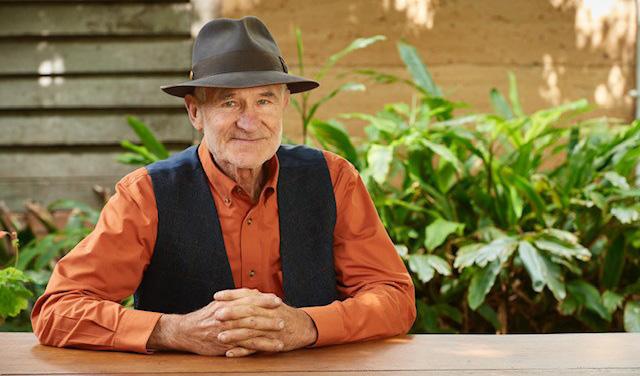
the world, David and the team at Crackerjack Wine are addressing one of the main challenges he sees within the wine industry – the struggles faced by the small farmer. “Without the co-op, all of these little farmers would be sucked up or under pretty restrictive contracts by the big guys. But now they’re in charge.”
David works with co-operative cellars and small farmers for many of his projects and isn’t afraid to state hard truths. This approach worked in his favour when he approached Producta Vignobles – who produce 25% of the wine in Bordeaux. “We said to them in 2017, ‘you guys, every day, are losing customers. You’re not relevant to today’s market’. We thought we’d blown that interview but they called us back the next day and said you’re right, and we’d like to work with you. So that’s what we’re doing; it’s a revolution.’’
Growers Cooperative (MGGC) producing Heartland – a Marlborough Sauvignon Blanc he believes is expressive of the best parts of the Wairau, Waihopai and Awatere valleys.
Having spent many a vintage working at Cloudy Bay, David speaks of the intellectual capital he had tied up in New Zealand. “And I almost let it go. I didn’t go back for 15 or 20 years, but then I suddenly thought, ‘this is ridiculous’. I went [to Marlborough] years ago and looked around for opportunities and then struck one with the co-op.”
By working with the MGGC, and other co-ops around
The end product is a successful partnership under the label ‘BDX Revolution’ – a collection of single varietal wines with stand-out labels, emphasising the evolution within revolution. David states emphatically that the French “are up for a revolution”. He needed this positive attitude when he said to the head winemaker before harvesting the white grapes, “get your beautiful machine harvesters and get out into the vineyard at three in the morning”.
“French people, normally they’re sitting around at eight [am] having a cigarette. He said, ‘I can’t do three, but we’ll
14 / Winepress February 2023 GROW
“Cloudy Bay was a once-in-a-generation thing.”
David Hohnen
CHERIE AGNEW
David Hohnen
do five’.” The early start paid off. “Within the first vintage, they saw the difference it was making to the freshness of their white wine. That was one revolution.” The next will be coming later in 2023 as David has convinced Producta Vignobles to switch their closures to screw caps. Which “will be a massive revolution” as cork closures remain dominant in France.
When discussing challenges facing the wine industry, David remains optimistic about water management and


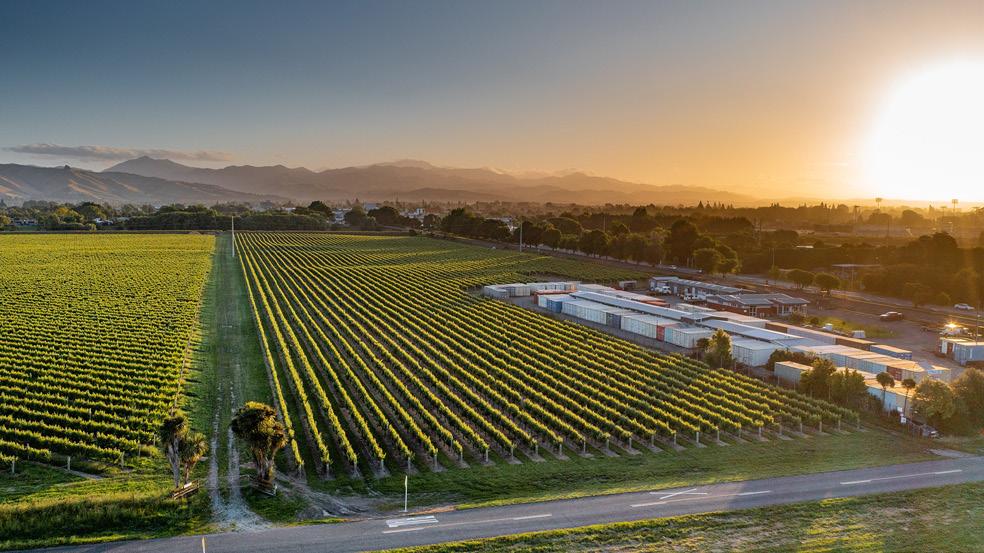
When it comes to memorable vintages, he says looking forward is more fun than looking back, but there are valuable lessons in the most challenging years. New Zealand handled the wet 1995 vintage “so well”, he says. “It was so unbelievably difficult, and we still got through. Not a great wine, but we made a wine.
“It was only a tiny industry at that time, but we brought – I call it sunshine in a bag – we brought 23 tonnes of Queensland sugar down to Marlborough because we had to
climate change. Aside from altering grape varieties as regions warm, he says there are “many, many tools in the toolbox” if things get hotter. “Rootstocks are one way. Certainly, the way we manage our canopy. We already have canopies that introduce sunlight and reduce water use, but we might have to change canopies to the way they do it in Spain today - to shade the soil.”
He is certain that the industry will adapt to challenges as it has in the past – citing the spread of phylloxera in Marlborough around 1990. “If we’d stood back and done nothing, viticulture would have been wiped out. But we stepped forward and made the changes.”
take everything from 17 brix to 21 or 22. It was a hell of a lot of sugar.”
He has established world-renowned wines – Cape Mentelle and Cloudy Bay – and is currently creating a revolution in Bordeaux and proactively supporting small farmers worldwide. But it seems David Hohnen is far from ready to take it easy. He’s started working with Bodegas La Eralta in Rioja, and has his eye on a future project in Fresno, California, where he originally studied. “Wine is a journey, and I don’t want to arrive”.
Winepress February 2023 / 15 GROW 12pm, Tues 21 February 2023 33 Seymour Street, Blenheim Charlie McLean I 027 346 1671 charlie mclean@bayleys co nz BE MARLBOROUGH LTD, BAYLEYS, LICENECED UNDER THE REA ACT 2008 Auction Reminder 14
Mike
BE MARLBOROUGH LTD, BAYLEYS, LICENECED UNDER THE REA ACT 2008 Located on State Highway 1 6 66ha total land area 5 33 planted hectares in Sauvignon Blanc No irrigation required Contract free for 2024 harvest Solid cropping history
Lower Wairau Road, Grovetown
Poff I 027 665 5477 mike poff@bayleys co nz
“Wine is a journey, and I don’t want to arrive.”
David Hohnen
Viticulture Pioneer
Murray Paterson’s 50 years working in wine
BRENDON BURNS
GROWING UP in Dunedin in the early 1960s, Murray Paterson’s parents allowed him to drink with dinner from about age 10. “I liked wine, and began to cellar wine - mostly German Riesling - from 1966.”
Discovering a copy of AJ Winkler’s General Viticulture in a second-hand bookshop saw him become enthused with the idea of viticulture and winemaking. “Applying Winkler’s concepts of how to select suitable regions for viticulture I looked at five; one, was Marlborough,” he says.
In December 1969, transferring to work in Auckland, Murray visited Blenheim and a real estate agent showed him land, including a block near where Talley’s factory now sits, selling for $200 an acre. “It was mostly growing gorse. I thought it ideal for grapes although I knew nothing at that stage.” The county council required 50-acre (20 hectare) minimums and Murray could not afford $10,000 – four times his then salary.
He joined the wine industry in 1972 - working in a wineshop (selling Delegat’s wines) in Mt Eden and pruning for Nobilo’s at Kumeu in the winter of 1973, before moving to a small Auckland wine merchant. In 1976, with more capital, he travelled back through Marlborough, where potential grape land now sold for $400 an acre. “John Marris had been waving Frank Yukich’s chequebook around,” he says.
In 1978, Murray enrolled in a diploma viticulture course at Riverina’s College of Advanced Education in Wagga. Over five years he did vintages at Chateau Tanunda (Barossa), Pipers Brook (Tasmania) Great Western (Victoria) and Mudgee to experience different climatic regions.

Returning to Auckland in 1983, he hit a problem. “They wouldn’t recognise Australian qualifications.” So, he pruned, drove tractors and learned how to spray vineyards – all experience he still draws on. In 1984, Murray set up as a consultant viticulturist, spending much time over 10 years in Central Otago, with people including pioneer Alan Brady. With typical understatement he says he made “a not insignificant contribution”. Similarly, he spent several years consulting and helping prune for Larry McKenna at Martinborough Vineyards.
But his sights were set on Marlborough, and he bought 9ha near Waihopai Valley’s spy station and in spring 1990 planted 6ha in Pinot Gris, Riesling and Dijon clone Pinot Noir. “I wanted to grow Pinot, because nobody else was, and Riesling – that’s my desert island wine.”
The June 1991 eruption of Mt Pinatubo saw a -8C frost hit on February 29, 1992, and Murray was forced to sell the block. Grove Mill hired him in 1994 and he enjoyed seven years working there, including with winemaker Dave Pearce.
In 2001, Murray returned to providing advice to growers who sometimes accounted for 10,000 tonnes of Marlborough’s production. Some blocks (like this writer’s) were tiny, but Murray worked patiently and never charged what he should. He also oversaw development of the 80ha Spotswood vineyard near Cheviot.
This year marks 50 years since he first pruned. Last December, a function at one grateful grower’s home marked his 50 years in wine, with Dave Pearce, Dr Mike Trought and Dr Rengasamy Balasubramaniam (Bala) just some of those to mark his contribution to Marlborough’s wine industry.
There was some teasing too. Murray has trained dozens of people to prune – urging care with each cut. “I call it meticulous – others have called it anally-retentive,” he laughs.
You’d think he’d despise machine pruning, but he believes it’s the future because of industry cost structures and labour shortages. In 33 years in Marlborough - he has seen massive changes – a more than tenfold expansion in vineyard area, and a move from family/small company vineyards to large, corporate operations.
Perhaps, with more capital he could have been our first pioneer, but he’s counting on a few years yet of quality pruning and advice before hanging up his secateurs.
16 / Winepress February 2023 CELEBRATE
Murray Paterson
Wairau Valley, 4336 State Highway 63
Five separate vineyard titles as individuals/combinations or as one contract free in 2023!

Lot 1 - 42 22 canopy hectares of Sauvignon Blanc and 10 frost fans
Lot 2 – 43.13 canopy hectares of Sauvignon Blanc and 5 frost fans
Lot 3 – 36.66 canopy hectares total with 15.54 hectares of Sauvignon Blanc and 21.12 hectares of Pinot Gris and 10 frost fans
Lot 4 – 43 14 canopy hectares with 22 79 hectares of Sauvignon Blanc, 20 35 hectares of Pinot Noir and 6 frost fans
Lot 5 – 43 09 canopy hectares of Sauvignon Blanc and 7 frost fans
The total property consists of 166.27ha of sauvignon blanc, 21.12ha of pinot gris and 20.35ha of pinot noir, totaling a very significant and well performing parcel of fruit. Excellent infrastructure includes a 150,000m3 reservoir for water storage, water shares will be included in each parcel 38 frost fans to mitigate frost risk and a large three bay shed with a built in office and solid family sized home The roading having been annually maintained, is in excellent condition with good access to all areas of the property. With a planting density of 2,525 vines per hectare the crop has shown consistent production and ensures promising returns for the future. With two distinct terraces the property offers flavor variation from varying soil types, offering appealing options for blending to achieve stylistic requirements for different markets This is an opportunity to be seriously considered, for further information for what's on offer contact the exclusive agents Mike Poff and Kurt Lindsay.

Deadline Sale
12pm, Thurs 9th March 2023 33 Seymour Street, Blenheim
Mike Poff I 027 665 5477 mike.poff@bayleys.co.nz BE
Immaculately presented 245ha (more or less) property has 207.74 canopy hectares of vines sitting on five different titles. The property is being offered as “all or part there of", offers will be considered in all varying options Kurt Lindsay I 027 469 9685 kurt.lindsay@bayleys.co.nz BE


Winepress February 2023 / 17
UNDER
REA
247 Mahaki Road, South Wair
MARLBOROUGH LTD, BAYLEYS, LICENECED
THE
ACT 2008
REA ACT
MARLBOROUGH LTD, BAYLEYS, LICENECED UNDER THE
2008
bayleys co nz/4135032
bayleys.co.nz
Rarangi Wetland
As part of a series on entrants in the Cawthron Marlborough Environment Awards, ANNABELLE LATZ finds it’s in boots n’ all at Wither Hills' Rarangi Wetland. Restoring a 50-hectare wetland at Rarangi Vineyard has been a case of trial and error, says Wither Hill’s quality and environmental Leader Kathryn Kleboe. Everyone is continually learning, she says of the site, where kahikatea, toetoe, harakeke, cabbage trees, kowhai, coprosma, manuka and swamp maire are abundant, including to the 20,000 native seedlings planted since the project began in 2009. “Pick your battles about what you can and cannot achieve,” she says. “For example, removing Old Man’s Beard is good, but it just comes back, so you’re best to plant natives in the gaps.”
The wetlands restoration is largely an inhouse effort, with annual planting days providing everyone the opportunity to learn about the regionally significant area, which is an example of the extensive wetlands once found across the Wairau Plains.
Having been involved since 2014, Kathryn says the wetland is a great tool for vineyard flood prevention or minimisation, acting as a natural drain for the soil. And there’s a huge benefit in having a space of common ground for everyone to be involved in, she says. “It’s nice to work for a company which does things that are not just about work.”

Kathryn is joined on the wetland project team by Rarangi vineyard manager Ben Burridge, senior machinery operator Tim Collingwood, and Emma Smith, personal assistant to the wine operations director. Tim began work at the Rarangi Vineyard five years ago, and was immediately attracted to the idea of a trapping programme on the site. There’s been an obvious increase in native birds since,
thanks to the decline in stoats, possums, rats and wild cats. He’s established an array of traps that he typically checks and baits before starting work, including ramp systems that keep them out of range of flightless birds, and game cameras that allow him to keep an eye on pest activity at night.
In the early days the main focus was on weeding, but since 2018 there has been an increased focus on planting. and vines have been removed to extend the native plantings. The current focus is on creating a corridor with the neighbouring Hinepango Wetland, which is already looking “pretty impressive”, Kathryn says.
The project began with a comprehensive two-year programme in conjunction with Biodiversity Fund of New Zealand and the Marlborough District Council, and in 2011 the work won the Habitat Enhancement Award at the Marlborough Environment awards. Fourteen years, countless weeds, hundreds of predators, and 20,000 seedlings after restoration work began, the thriving Rarangi Vineyard wetland is an entrant again, with the project team happy to share their story with others, says Kathryn.
For those interested in developing a wetland, she says knowing where to start is a huge part of the process. “We get local experts along to our restoration days; they know so much and are so passionate about it.” Collecting seedlings from thriving plants creates confidence that new plants will survive, although embracing trial and error is all part of it, she says. The project nurtures an interest in the environment and grows the mana of staff participating, she adds. “The team days are great… Everyone’s out there in their gumboots.”
Wither Hills is one of four entrants in the wine industry section of the environment awards, sponsored by Wine Marlborough. cmea.org.nz
18 / Winepress February 2023 CELEBRATE
Kathryn Kleboe at Rarangi Wetland. Photo Jim Tannock.
ECO TRAINING STAKE
ECO TRAINING STAKE is a new innovation designed to replace single use bamboo with a multi-use, sustainable and fully recyclable product that can also be used in conjunction with Klima and other vineyard machinery.
Why ECO TRAINING STAKE?
• Marlborough is beginning their redevelopment cycle and utilising reusable stakes is cost-effective as vineyards only need to buy their stakes once, then they can reuse them multiple times.
• Vineyards around the world are becoming more automated and mechanised and uniformity to the vineyard plant trunk is key. By keeping vineyard stakes in the ground for three to four years the vine trunk will grow straight and aligned with your trellis.
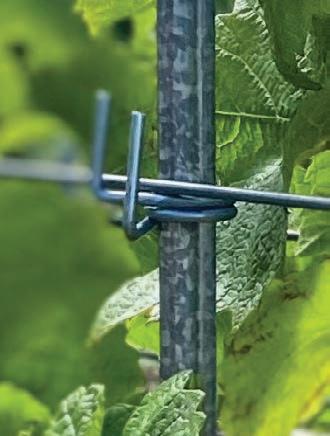
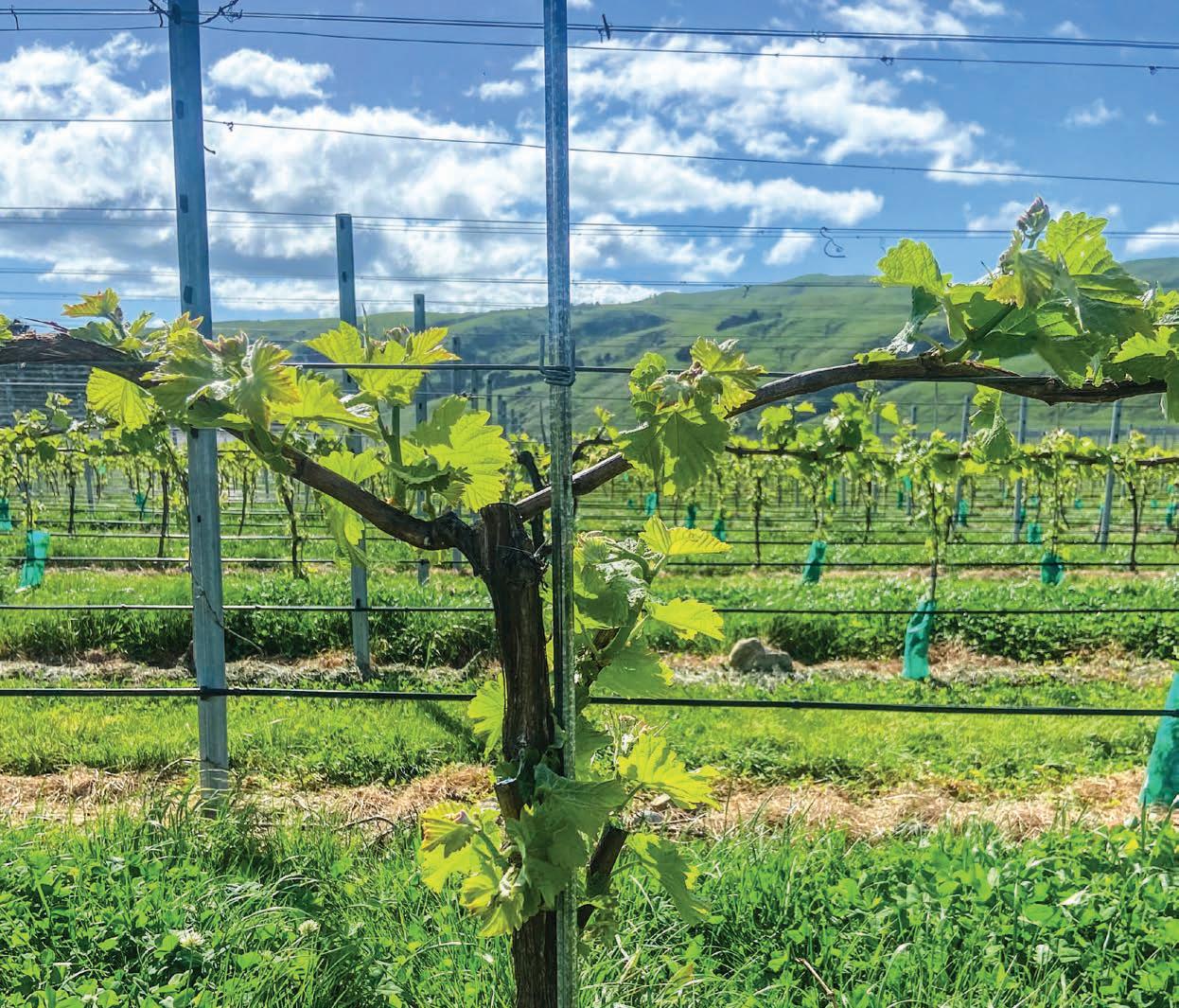
• The ECO TRAINING STAKE is fully recyclable.
• ECO TRAINING STAKE aligns with the wine and viticulture industry sustainable grape growing practices.
• A solid stake protects young plants from cultivators.
• There is a clip option available for using Klima Pruning Machines.
Winepress February 2023 / 19
CONTACT US TODAY NZ Tube Mills, 2-14 Port Road, Seaview, Lower Hutt, Wellington FREEPHONE 0508 TUBE | Ph +64 4 576 1800 | EMAIL sales@ecotrellis.com ecotrellis.com A NEW INNOVATION FROM ECO TRELLIS ®
ECO TRAINING STAKE
In the Pipeline
In the first of a series of water updates, resource management expert Quentin Davies, looks at what’s in store for the wine industry. The regulation of taking water for irrigation is going to change. At this stage it is impossible to predict whether greater restrictions may be placed on the quantities of water available for irrigation. Marlborough grape growers are fortunate to have existing regulations which have ensured that environmental bottom lines have not been crossed. However, some may disagree. The process which has already commenced will enable any disagreements to be resolved.

Most people do not like risk and do not like change. Established winegrowers are no different. Yet change is inevitable. Markets change. Technologies change. The climate has and will change. Regulation of the allocation of water has and will change.
In Marlborough we are reasonably well placed. None of our significant rivers that are used for irrigation have a notable water quality problem. We lack some of the serious issues that challenge Otago and Hawke’s Bay.

We also have been lucky to have Marlborough District Council Regulations preventing over extraction of water quantity on our major grape growing rivers and aquifers. While Fish and Game would disagree, the present water quantity limits protect indigenous biodiversity values as well as a nationally significant trout fishery. We do not have many of the challenges that other grape-growing regions face.
Change within the next four years is, nevertheless, inevitable. There are three reasons. First, the National Policy Statement for Freshwater Management 2020 (NPSFM) and changes to the Resource Management Act (RMA) require the Marlborough District Council to consult and prepare amendments to the Marlborough Environment Plan which will be notified in late 2024.
Second, the present Marlborough Environment Plan, despite the significant work that has gone into it, has not had adequate iwi input. Such a state of affairs will not be enduring. Iwi input into plans is essential.
Third, there will be reform of the RMA. While it is plausible that that might occur before the election in October, whatever government is elected will see the project through. The RMA is seen as broken and no longer fit for purpose across the political spectrum.

Longer term pressures will also have a bearing. The Marlborough high country is being put into forest. That will reduce surface water quantity. The climate has changed and is continuing to change. We are told, at the very least, to expect greater fluctuations in water availability.
Winegrowers in Marlborough need to navigate through this. The wine industry needs to demonstrate our operations work within environmental limits, better understand the views of Marlborough’s tangata whenua iwi and manage future risks.
The process will take time. The NPSFM process has been underway for around a year. This process will supersede the freshwater provisions of the proposed
20 / Winepress February 2023 PROTECT 79 High Street | enquiries@gwlaw.co.nz | www.gascoignewicks.co.nz | T: 03 578 4229 Quentin
Quentin Davies and Emma Deason have extensive experience in environmental legal matters, and are available to help you with > Resource Consents > Strategic Planning > Understanding resource management law reform Gascoigne Wicks is a full service law firm, so we can help with all your other personal and business legal matters. Call us now... Proud supporters of the Marine Farming Association
Davies Emma Deason
Marlborough Environment Plan. Mediations of those provisions (which have been in development since 2007) will occur in the coming months. While the work that Wine Marlborough, Delegat and the Awatere Water Users Group has done in that process has been valuable, the focus must now be on the NPSFM process that is just beginning.
The first round of consultation with the Council has now commenced: marlborough.govt.nz/environment/ freshwater-management.
picnicking, as well as stunning scenery that we all enjoy. It is a given that the health of the river needs to be protected prior to any water being taken for irrigation. Consequently, including observations of indigenous species such as birds and lizards supports the industry position that the health of the waterways is protected by existing regulation.
The wine industry as a whole will be making a submission to the Council. However, it is industry members who have a detailed knowledge of local rivers and other waterbodies. Submissions which emphasise the abundance of recreational, scenic and environmental values that we have will help demonstrate why the existing regulations protect what needs to be protected.
Submissions are due February 28, 2023. There will be two further rounds of consultation before December 2024 when the Council will notify new freshwater planning provisions. The present legislation states that those provisions will be finalised by 2026.
That first round of consultation relates to the boundaries of Freshwater Management Units (FMUs), and their values. The key point to emphasise is the extensive range and high-quality environment that is provided by the existing management. In Marlborough we can celebrate quality fishing, extensive areas for swimming, kayaking and
The wine industry’s position in the NPSFM process will need to be science based, collaborative and respectful of Marlborough’s tangata whenua iwi. The present industry can demonstrate that it is operative within appropriate environmental limits. In that way risks can be appropriately managed.
Quentin Davies is a partner at Gascoigne Wicks and has represented wine industry participants in numerous Court and Council hearings. He will contribute a series of columns outlining regulatory changes on the horizon. The views are his own and are not a substitute for independent legal advice.
Interesting parcels required
Mahi is looking to expand our grower network and is looking to work with growers with smaller parcels, around two hectares and above.
As we are growing, we require all our key varieties, being Sauvignon, Pinot Gris, Chardonnay and Pinot Noir.
Winemaking space available
Interesting parcels required
Our winery will have space for about 150 tonne of white tank capacity in the coming vintage and going forward.
Mahi is looking to expand our grower network and are looking to work with growers with smaller parcels, around two hectares and above.
Careful, personal winemaking at a smaller facility allows more contact and access to your fruit and wine so if you require any space
Please get in touch
brian@mahiwine.co.nz or 021 671 631

As we are growing, we require all our key varieties, being Sauvignon, Pinot Gris, Chardonnay and Pinot Noir.
All enquiries treated in confidence
If you are looking to team up with a smaller, personal wine company please get in touch with me at brian@mahiwine.co.nz or 021671631.

Winepress February 2023 / 21 EDUCATE
“We lack some of the serious issues that challenge Otago and Hawke’s Bay.”
Quentin Davies
Wine Workshop at Mahi
Generation Y-ine
Lewis Davidson on hitting the jackpot
KAT PICKFORD
WITH EIGHT vintages in four countries and a winemaking degree under his belt, Lewis Davidson has had a unique start to his first nine years of winemaking. Lewis took five years to complete the three-year bachelor’s degree of Viticulture and Oenology through Lincoln University, thanks to gap years throughout his studies.
The unconventional route gave him time to top up his bank account and an invaluable opportunity to experience some of the many styles of winemaking around the world. “I found studying full-time quite tough. I was working 20 hours a week in bars and flipping burgers and by the end of the year, the financial situation was quite stressful,” Lewis says. “So I decided to take some time off study to work and travel, to take the pressure off and make sure that I really wanted to work in the wine industry.”
In 2016, his first gap year between studies, Lewis worked vintage for Giesen Wines in Marlborough, before heading off for a vintage in California, where he worked for Girard Winery.
In 2017, with his bank account and enthusiasm brimming, he returned to his studies, before once again taking a break the following year and heading off to work for Flametree Wines, a small contract winery in Western Australia. “It was really cool. We only processed 450 tonnes but I was the only cellarhand there, so it was long days but also a great opportunity to work alongside a number of winemakers,” he says. “It was really interesting to see how the various techniques of the different winemakers affected the outcome of the wines. There was no universal wine philosophy; every wine was unique, despite all the grapes coming from the same area.”
After Margaret River, he jetted off to St Catherines, near Niagara Falls in Canada, where he worked at Henry of Palham, a boutique, family-owned winery. After graduating
in 2020, he worked as a vineyard contractor in Central Otago, then picked up his first permanent full-time position in 2021 as a cellar hand at Cloudy Bay in Marlborough.

Having worked for a variety of different sized wine companies, Lewis feels as though he’s hit the jackpot at Cloudy Bay. “I feel super lucky, it’s a medium to large company with a strong focus on producing high quality wines, so we’ve got more staff and more time to look after the wine properly and not make any mistakes.”
Last year he took part in the Young Winemaker of the Year competition, where he discovered he really wanted to focus on winemaking in the future. “There are a lot of different pathways to follow in this industry, and I’ve been floating along having a lot of fun, but also learning a lot along the way.”
Cloudy Bay gives him the opportunity to continue to learn and grow, with regular time in the lab and invitations to take part in winemaker tasting and blending sessions. Not having a predetermined goal in mind has given him the freedom to step into opportunities that have opened up for him along the way, 27-year-old Lewis says. “It’s taken me a while to decide, but I got there in the end. I feel like it’s time to focus and give winemaking a go.”
22 / Winepress February 2023 CELEBRATE
“It was really interesting to see how the various techniques of the different winemakers affected the outcome of the wines.”
Lewis Davidson
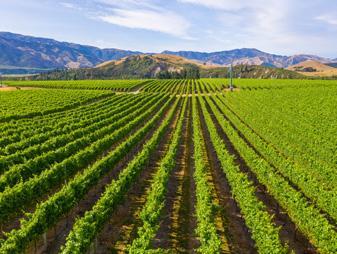



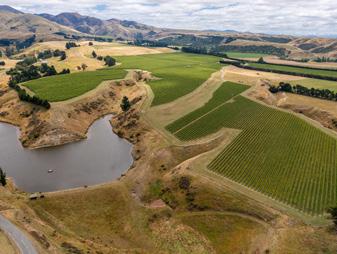
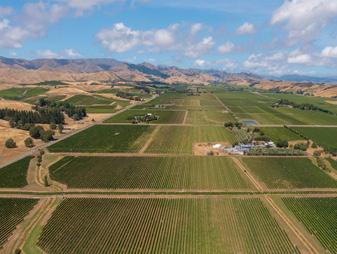

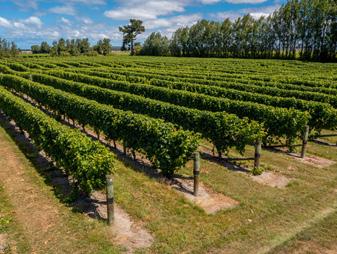
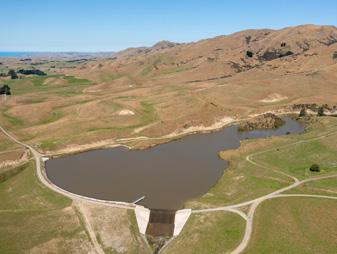

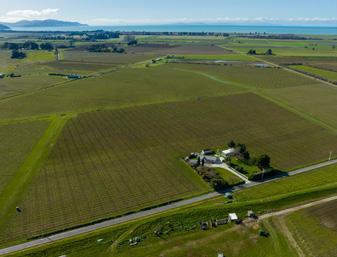
www.colliers.co.nz Andy Poswillo Director I Rural Specialist I Agribusiness 027 420 4202 Marlborough Rural Realty Limited T/A Colliers Licensed REAA 2008 Accelerating success. With $49,000,000 of confirmed Marlborough viticulture sales in 2022 and a further $68,000,000 currently under contract, I have genuine qualified interest for all classes of Marlborough vineyard properties. Recent campaigns have generated significant enquiry through Colliers extensive National and International networks. 190 Brookby Road, Hawkesburyry 63 Kaka Road, Ward 220 Ballochdale Road, Seddon 4646 State Highway 1, Seddonn 113 Renners Road, Seddon 123 Wairau Bar Road, Spring Creek 496 Haldons Road, Seddon 27 Brookby Road, Hawkesburyy Contact me in confidence for a no-obligation discussion and market update on property values and how the Colliers network can maximise the exposure and value of your property. 34B Ferry Road,
SOLD SOLD SOLD SOLD SOLD SOLD SOLD SOLD SOLD
Spring Creekry
Biosecurity Watch


Welcoming Biosecurity Advisor Kerrie Hopkins
WITH JIM Herdman on extended leave for 2023, New Zealand Winegrowers welcomes Kerrie Hopkins into the role of Biosecurity Advisor, based in Blenheim at the Marlborough Research Centre. Kerrie brings previous wine industry experience and a real passion for working with people to the role, and will be familiar to many in Marlborough through previous roles at Saint Clair, Hortus, Nautilis and Onside.

Tell us about your background and experience
Prior to arriving in New Zealand in 2016, I worked for Australia Post (AP) for 18 years, commencing in 1998 as a part-time motorcycle postie. The last few years of my career at AP I was their National Safety Lead. The role was to lead a change in culture from a transactional leadership to transformational, in short more focus on placing the health, safety and wellbeing of our employees as a priority not operations. During my time at AP I completed a Diploma in Business, Human Resources Management, and a Level IV in Workplace Health and Safety. Since arriving in Marlborough I have completed a Level IV New Zealand Certificate in Horticulture Production (Fruit Production) – Viticulture.

My husband Leigh and I relocated to Marlborough with our two border collies, and now live in Rarangi with three border collies, Tama, Kura and Boo, with a fourth planned this year! We are a blended family, with six grandchildren – five in Australia and one here in Blenheim.
Prior to joining the team at New Zealand Winegrowers (NZW), I worked as an account executive with Onside for 19 months. Onside is an innovative app that simplifies safety, operations, communications and biosecurity on rural properties. Having daily conversations with New Zealand farmers gave me a real insight into their business, the seasonality of their workload, and their hardship and risks, due to the likes of drought, flooding, loss of crop or livestock, not being able to put crops into the ground due to weather events, and the very real risk of biosecurity incursions such as M-bovis, Psa (kiwifruit), brown marmorated stink bug and foot-and-mouth disease.
What appealed to you about the role of biosecurity advisor for an industry organisation?



Firstly, the skills and experience required to fulfill the role aligned with my capability; being in a position to be able to ensure members’ awareness of biosecurity risks and mitigations; engagement with NZW members and staff in biosecurity training and awareness to build biosecurity capability; championing the importance of biosecurity amongst our members; continuing to make a difference.
What are you hoping to achieve during your time in the role?
Continuing the dynamic work and contribution to our members and staff that Jim Herdman has provided so far.
Why is biosecurity is important for the New Zealand wine industry?
The industry employs 22,000 people across growers and wineries; wine exports are valued at $2 billion annually; and New Zealand’s wine is the nation’s 6th largest export good. We are in a position to be able to educate and advise members on how to ensure their livelihoods and that of others is protected in the event of a biosecurity incursion.
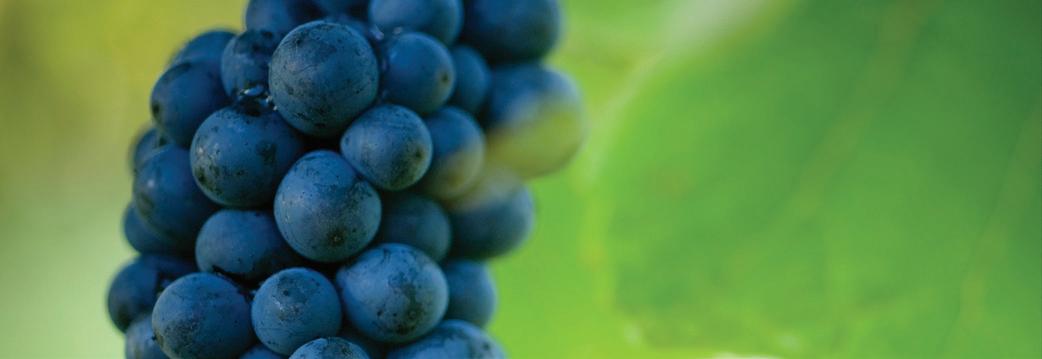
24 / Winepress February 2023 PROTECT
IF YOU SEE ANYTHING UNUSUAL CATCH IT. SNAP IT. REPORT IT. CALL THE BIOSECURITY NEW ZEALAND PEST AND DISEASE HOTLINE 0800 80 99 66 Email enquiries to biosecurity@nzwine.com
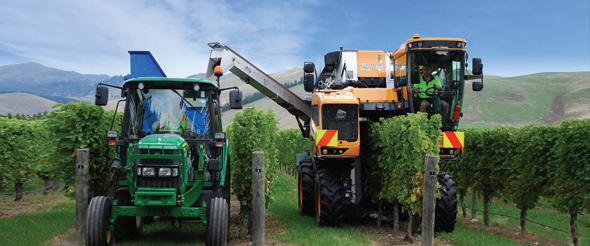



Winepress February 2023 / 25 *Finance offer available to approved applicants of UDC Finance. Offer based on new UBCO Adventure Bike 2.1kW at a price of $8,290 (includes on road costs of $300). Financed over a maximum of 60 months with weekly repayments of $45.82, and no deposit. Total amount payable over the term $11,913.20. Fixed interest rate 11.95% p.a. The offer includes an establishment fee of $130, a dealer fee of $440, PPSR fee of $10.35 and $0.50 per week account keeping fee. Terms and conditions apply. Excludes all lease and some fleet purchases and not available in conjunction with any other offer. Get yours from just $45/week* 2✗2 Electric Motorbikes Perfect For The Vineyard PHONE 03 577 5335 6 HUTCHESON STREET, BLENHEIM MAYFIELDMOTORWORLD.CO.NZ SUPPLIERS OF: n Vineyard posts & strainers n Quality timber products n Utility buildings - designed for your needs n Locally owned n Working towards the betterment of Marlborough TOP DEALS ~ TOP SERVICE 163 Hammerichs Road, Blenheim Ph 03 578 0221 Fax 03 578 0251 sales@rapauratimber.co.nz
Industry News
New Zealand Wine; Altogether Unique
A bright new brand platform for New Zealand wine has captured the world’s attention, with media across the globe sharing the launch of New Zealand Wine, Altogether Unique. The refreshed brand is based on three pillars of Purity, Innovation, and Care, tapping into research revealing the aspects of New Zealand wines that resonate most with consumers. “Some places have unblemished sunlight, young soil or beautiful water,” says the new brand story. “Others have innovation, passion for the craft or care for the land. But only one place has the purity of it all… New Zealand Wine. Altogether Unique.”

Sir Sam Neill - proprietor of Central Otago wine producer Two Paddocks and one of New Zealand’s most acclaimed actors - has helped launch the brand through a video clip, talking about unique soils and climate, and about people with a passion for winegrowing, sustainability, and innovation, “unhampered by tradition”. New Zealand Winegrowers (NZW) general manager marketing, Charlotte Read, says the project has called on the expertise of creative agency Many Minds, as well as NZW members, “to distil down what makes New Zealand wine unique and special and sets us apart from our international rivals”. With global activity returning to ‘normal’, it’s more competitive than ever to have voice of the New Zealand Wine brand heard, “and a clear premium brand message is essential”, she says. “Creating a compelling brand positioning for New Zealand Wine for all our members to build upon is important as we seek to engage and motivate evolving wine drinking audiences.”
Live Wires
As vintage approaches, Marlborough Lines is reminding vineyard operators to take care with high voltage lines. “With the huge workload over harvest everyone involved must remain vigilant and ensure that powerline hazards are identified and appropriate controls are put in place,” says Warner Nichol, general manager of operations.

The electricity distribution company has been running an awareness campaign since an event at the end of the 2017 harvest, in which a tipper brought down high voltage lines in a vineyard near Renwick. “Whenever this happens, or even when contact is made but lines don’t come down, there is the potential for significant harm to those involved and those in the immediate area,” says Warner.
The campaign has been deemed a success, with incident numbers trending down despite the challenges of the last few years, including Covid-19. “We have seen a marked improvement in awareness from growers and contractors of their obligations in relation to the New Zealand Electrical Code of Practice for Electrical Safe Distances (NZECP34) when operating (raising, lowering or tipping) mobile plant within 4m of power lines,” he says. “And in fact there has been a reduction in close approach permits issued through moving tipping operations away from lines.”
Warner says the risk is not just of electrocution to those in the machine or nearby when wires are contacted by plant and machinery. “There is also a risk around assumptions being made that downed lines are de-energised or dead.” Lines should always be treated as live until Marlborough Lines has made the site safe, he adds. “Fires can start from downed lines; this has happened before in Marlborough and vineyards have been damaged. There are other risks during harvest as well and past incidents include machinery driving into poles (both day and night), and netting being blown into lines.”
The key message of the campaign is that everyone working in vineyards with power lines through them, or in the vicinity, is aware of the hazards and understands the steps that must be taken to keep people safe, says Warner.
Staying safe with high voltage lines
• Designate specific areas away from overhead lines for tipping and loading
• Work with Marlborough Lines to relocate or underground lines that present high risk
• If possible, use GPS technology to help make operators aware that poles and wires are present
• Paint or mark poles and stay wires to increase visibility
• Ensure netting has been adequately restrained
• Implement measures to manage fatigue
• Contact Marlborough Lines for advice and, if necessary, a close approach permit
• Carry out training to ensure people know what to do when an incident occurs
26 / Winepress February 2023
Who you gonna call?
New Zealand agritech startup Cropsy Technologies been awarded a $534,000 project grant through the Ministry for Primary Industries’ Sustainable Food and Fibre Futures fund and a $200k AGMARDT Agribusiness Innovation grant to lead a project called 'You know I can’t harvest your Ghost Vines: Vineyard-scale monitoring of unproductive vines'. The aim is to develop tools to help growers understand the health and productivity of every vine in their vineyards in order to identify missing, dead, dying or otherwise unproductive grapevines, says Cropsy’s head of product and innovation Dr Gareth Hill. The twoyear collaboration with Pernod Ricard Winemakers, Indevin Group, and Cloudy Bay Vineyards, and viticultural consultancy Fantail Consulting will build a ‘patient history’ of all the vines in a vineyard, says Gareth. “By putting each vine’s performance into context we’ll be able to make more accurate forecasts about its productivity and the future of the vineyard as a whole.”
Vineyard demand booming
Unrelenting growth in global demand for Marlborough

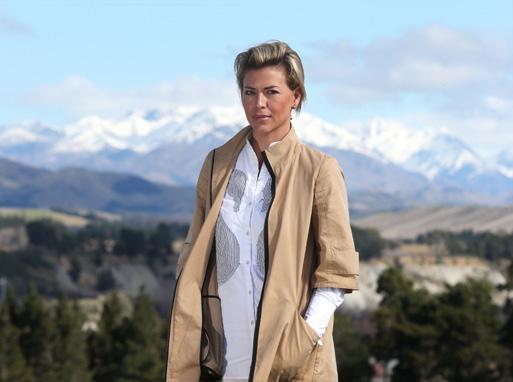
Sauvignon Blanc is driving up demand for vineyard land, says viticulture specialist Mike Poff (pictured), from Bayleys Marlborough. “What we are seeing is the demand for fruit is high from all wine companies. It’s a very buoyant
Climate Action Week
Climate Action Week Marlborough is just one step towards raising climate awareness and lowering carbon emissions, says event founder Catherine van der Meulen (pictured). “We can’t just have one annual event and then set and forget,” says the director of Entrepreneurial Women with Purpose. “We need to continuously engage people in the journey around climate action.”
market and price is firm whether it’s fruit supply or a lease.” There’s a long line of investors keen to buy into the industry, despite price reaching $300,000 to $400,000 per hectare in recent years, says Mike. “This, coupled with wine companies looking to secure more fruit, is making for a very competitive market.”
The need for more Sauvignon Blanc is also seeing wineries invest outside of the region, adds Mike, who is currently marketing a Wairarapa block to Marlborough wine companies. “The challenge is to keep up with the growth in the world market, so I think supply long term is critical for all wine companies.”
On the sale side of the ledger, “succession is a massive discussion at the moment”, he says, talking of growers who are thinking of relinquishing their asset while the market is strong and interest rates are higher at the bank. “At the moment we are actively talking to people about properties that will be marketing without the crop, so settled after harvest,” he says, describing holdings from 1ha to 200ha potentially being moved on.
Marlborough’s inaugural Climate Action Week, to be held from 13 to 17 February, has been designed to grow awareness and knowledge about low carbon emissions to grow a highly productive and thriving community, says Catherine. The week includes five days of hands-on education, from “immersion experiences” at the likes of Dog Point Vineyards and Yealands Estate, to workshops led by experts in understanding, reducing and offsetting carbon emissions, as well as discussions that include water, energy, biodiversity and the economics of climate change in Marlborough.
Catherine notes the wine industry has been swift to engage, with New Zealand Winegrowers stepping up as a stakeholder, wine companies engaged in presenting, and industry members buying tickets to sessions. There is a growing understanding about the risks of climate change, which has been heightened by extreme weather events and climate trends that impact on local industries, says Catherine. “There is a huge level of awareness out in our community at the moment knowing we have to change and have a positive influence.” Turning that awareness into action is the next step, she says.
Tapping into the notion of change taking a village, the inaugural week will bring together organisers and influencers, including people passionate about living in a climate positive world. It will weave in sessions with educators and school students, as well as businesses that want to engage, learn and change, or share their own climate action experiences. Catherine says it’s vital to engage the business sector. “I really believe that through our business community we can create a bigger wave of change.” events.humanitix.com
Winepress February 2023 / 27
Wine Happenings
A monthly list of events within the New Zealand wine industry.
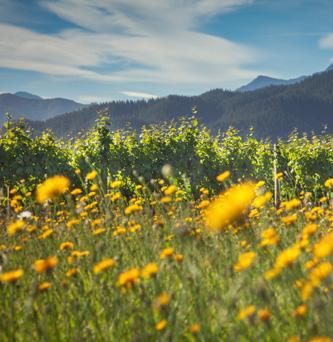




To have your event included in the March Wine Happenings, please email details to sophie@sophiepreece.co.nz by February 20. For more information, please use the contact supplied or email sarah@winemarlborough.nz
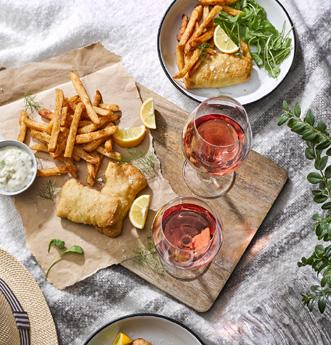

FEBRUARY
5 New Zealand Rosé Day
8 Rock Ferry Wine’s Twilight Market, 4pm to 7pm (marlboroughnz.com)
11 Marlborough Wine & Food Festival (marlboroughwinefestival.com)
12 Awatere Wine Tasting Summer Series Tūpari Cellar Door, 12.30 to 1.30 (marlboroughnz.com)
12 Forrest Estate Summer Sunday Sessions, 1pm to 4pm until April 23, 2023 (marlboroughnz.com)
13 - 17 Climate Action Week Marlborough (see page 27)
25 Rock Ferry Wine’s Laid Back & Live Music Sessions, 1pm to 4pm (marlboroughnz.com)
MARCH
3 Framingham Wines 2023 Harvest Concert (R18), 6pm to 11pm (marlboroughnz.com)

8 Rock Ferry Wine’s Twilight Market, 4pm to 7pm
12 Awatere Wine Tasting Summer Series Tūpari Cellar Door, 12.30 to 1.30
APRIL
7-9 2023 Yealands Classic Fighters Airshow (classicfighters.co.nz)
20 2023 Cawthron Marlborough Environment Awards event, 5pm, Marlborough Events Centre


28 / Winepress February 2023
Wine & Food Festival - February 11
New Zealand Rosé Day - February 5 Climate Action Week Marlborough - Feb 13-17
CROPLANDS SALES AND SERVICE AGENT FOR THE MARLBOROUGH REGION


Selling, building and servicing Croplands Quantum Vineyard Sprayers
Now building, servicing and selling Croplands Quantum Vineyard Sprayers
Now building, servicing and selling Croplands Quantum Vineyard Sprayers
For more information or to order your next Quantum Vineyard Sprayer. Contact the crop protection specialists at Agrivit.
Now building, servicing and selling Croplands Quantum Vineyard Sprayers
For more information or to order your next Quantum Vineyard Sprayer, contact the Malborough’s Spray Equipment Specialists at Agrivit.
For more information or to order your next Quantum Vineyard Sprayer, contact the Malborough’s Spray Equipment Specialists at Agrivit.
For more information or to order your next Quantum Vineyard Sprayer, contact the Malborough’s Spray Equipment Specialists at Agrivit.
Jeremy Watts | 021 446 225 | jeremy@agrivit.co.nz | 03 572 8787 | www.agrivit.co.nz
Jeremy Watts | 021 446 225 | jeremy@agrivit.co.nz | 03 572 8787 | www.agrivit.co.nz
Jeremy Watts | 021 446 225 | jeremy@agrivit.co.nz | 03 572 8787 | www.agrivit.co.nz
SOLD LOCALLY BUILT LOCALLY SERVICED LOCALLY
SOLD LOCALLY BUILT LOCALLY SERVICED LOCALLY
Jeremy Watts | 021 446 225
SOLD LOCALLY BUILT LOCALLY SERVICED LOCALLY
jeremy@agrivit.co.nz
03 572 8787 | www.agrivit.co.nz
Agent
the Marlborough
Croplands Sales and Service
for
Region
CLD6791_Croplands NZ agrivit ad_297x210mm.indd 1 24/11/22 1:02 pm
Sales and Service Agent for the Marlborough
Croplands
Region
Croplands Sales and Service Agent for the Marlborough Region
Collaborating, innovating and supporting growers in New Zealand
For more than 100 years, Fruitfed Supplies have worked closely with growers, suppliers and industry bodies to support the success and sustainability of the viticulture sector.




Our stores stock a wide range of supplies for both conventional and organic wineries including:
> Dry goods & enzymes

> Cleaning products
> Fermentation & filter aids
> Yeast & sugar
> Fining products
We know horticulture
www.fruitfedsupplies.co.nz


A trading division of PGG Wrightson Ltd
your local Fruitfed Supplies team, or visit fruitfedsupplies.co.nz for more information.
Contact













 JEFFREY CLARKE
JEFFREY CLARKE









































































